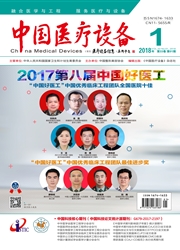

 中文摘要:
中文摘要:
为了探索荧光/化学发光双模式成像方法用于可降解生物材料研究的可行性,将载有量子点的可降解高分子微球(量子点复合微球)植入小鼠背部皮下,利用美国Caliper定量荧光和生物发光成像系统IVISLuminaII观察不同时间点植入部位的荧光强度和L-012介导的化学发光强度的变化。结果显示:30mg量子点复合微球植入28d时,仍能检测到荧光信号。L-012介导的化学发光强度随时间逐渐减弱,第28d时,量子点复合微球处仍存在微弱的化学发光。
 英文摘要:
英文摘要:
To develop in vivo fluorescence and chemiluminescence dual mode imaging method for materials, quantum dots (QDs) loaded with biodegradable polymer microspheres (BPM) were subcutaneously injected into the back of mice. L-012 was employed to noninvasively monitor the product of reactive oxygen species. The fluorescence intensity and chemiluminescence intensity were observed by Quantitative Fluorescent and Bioluminescent Imaging System IVIS Lumina II from Caliper at different time points. The results showed that the fluorescence of 30 mg BPM/QD could be detected up to 28 d.Meanwhile, chemiluminescence intensity of the implanted microspheres induced by L-012 decreased with time. On day 28, there was still weak chemiluminescence where the microspheres were implanted.
 同期刊论文项目
同期刊论文项目
 同项目期刊论文
同项目期刊论文
 Positive cholesterol derivative combined liposome as an efficient drug delivery system, in vitro and
Positive cholesterol derivative combined liposome as an efficient drug delivery system, in vitro and Tablets Based on Compressed Zein Microspheres for Sustained Oral Administration: Design, Pharmacokin
Tablets Based on Compressed Zein Microspheres for Sustained Oral Administration: Design, Pharmacokin 期刊信息
期刊信息
